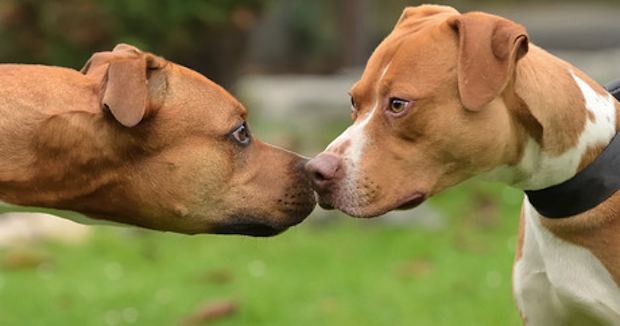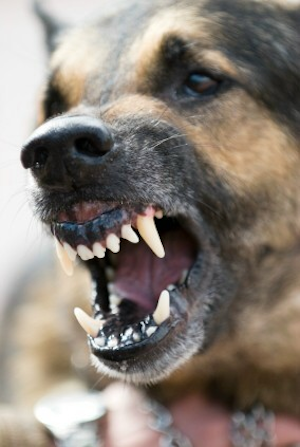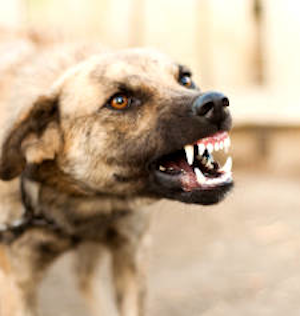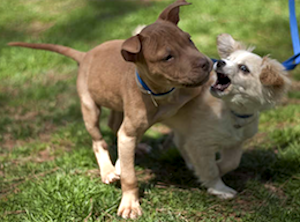Two essential aspects of fear: (1) Fearful behavior has genetic and learned components, and (2) our pets may show fearful behavior because we have taught them that without being aware.
We usually distinguish between rational or appropriate and irrational or inappropriate fears. The latter are called phobias, i.e., fears that are disproportional to the dangers in question, although some phobias do have a survival value.
Fear mechanisms serve the survival of organisms by producing appropriate behavioral responses. Hence, evolution has preserved it, subject to adaptive changes throughout time and according to the posed environmental challenges. From an evolutionary perspective, the particular fear behaviors of a species may be an adaptation that was useful at some point in the past. The distinctive responses to fear stimuli may have emerged and developed during different periods. For example, fear of heights, common to most mammals, has probably developed during the Mesozoic period; and fear of snakes, usually in simians, during the Cenozoic period. Claustrophobia, agoraphobia, and aquaphobia may also have their origins in evolutionary adaptations.
Predators and prey have different strategies to deal with threats. Their behavioral strategies evolved throughout millennia under the constant struggle for survival. Predators avoid dangerous stimuli by creating distance, escape being the favored strategy. Prey animals freeze preferentially when the predator is still relatively far away, but when distance decreases to a critical value, the animal flees. Thus, flight appears to be a genuine unconditional response to the unconditional stimulus consisting of a predator at a critical distance.
Fearful responses and their intensity seem to be a consequence of predisposing traits, resulting from many gene-environment interactions during the development of the individual. The latest research has established a genetic basis for fearful behavior. Researchers conducted studies with humans as well as other animals. In humans, researchers have been able to study the effect of genetics (family lines and twins) and environment (adoption cases).
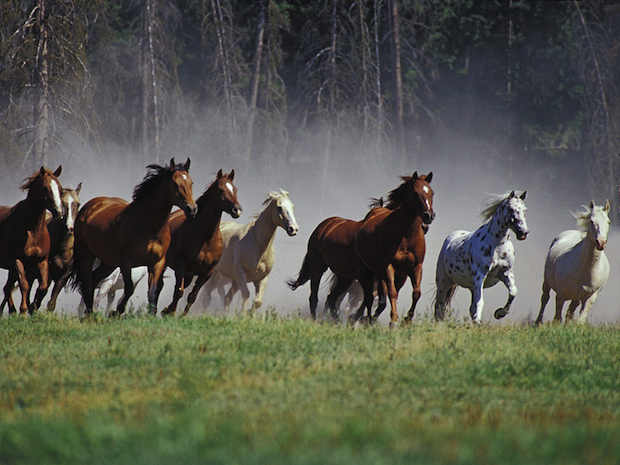
Fleeing is the first strategy when facing a threat. Horses seldom gallop in nature except when fleeing from a predator.
Flight is the primary strategy animals use in the face of a threat. This behavior is associated mainly with the sympathetic nervous system, which mobilizes the organism for the so-called fight-or-flight response originally described by Cannon. While flight is an active coping strategy when facing danger, freezing (immobilization) and hiding are passive coping strategies. Depending on species, such a strategy is the next-best option to flight. Animals freeze and hide when escape is impossible. Freezing implies an inhibitory activity in the autonomic system (hypotension, bradycardia), formerly described by Engel and Schmale as a conservation-withdrawal strategy.
Thanatosis, or tonic immobility, is an extreme form of freezing behavior. For example, white-tailed deer fawns (Odocoileus virginianus) can lower their heart rate to 38 beats per minute (from about 155) for up to two minutes.
Whether an animal has a preference for an active or a passive defense strategy is not solely a question of context. Research shows that some animals do prefer one strategy rather than the other. In exactly the same situation, two animals may respond differently. The interesting point is that these patterns, both behavioral and neuro-endocrinal, seem to be consistent. Some researchers suggest that this may explain why some individuals are more resistant to stress and stress-induced malfunctions than others. Researchers found the tendency to react one way rather than the other to run in families, suggesting a genetic component. The experiments were conducted with rats and mice, but we have no reason to suspect that studies of other species would not yield the same results.
Fear is probably experienced similarly in many species. All mammalian species show three different sites in the brain where electrical stimulation will produce a complete fear response: (1) the lateral and central regions of the amygdala, (2) the anterior and medial hypothalamus, and (3) areas of the PAG, the periaqueductal gray, which is the gray matter in the midbrain involved in the modulation of pain and defensive behavior. Researchers have also studied defensive strategies in various species and concluded that human reactions to threatening stimuli are not qualitatively different from nonhuman mammals.

The early development has a critical influence on how animals will respond to challenges, stress and fear eliciting stimuli.
The amygdala seems particularly relevant. We suspect that it may have a significant function in regulating many facets of social behavior. It also appears that threatening stimuli activate the amygdala, which in turn has a decisive influence on the cognitive mechanisms of the individual, including the perception of the environment, selective attention (relevant for learning), and memory.
Conclusion: Not surprisingly, and in line with many other behavioral traits, fearful behavior depends upon two different factors: (1) a genetic predisposition and (2) the influence of the environment. Environmental factors during the development of the young individual may be critical in its ability to cope with stress and fear-eliciting stimuli. Early experiences appear to affect the neural and biochemical systems involved in fearful behavior and in dealing with stress—as well as learning processes and the capacity to deal with threatening stimuli in adulthood. Maternal prenatal stress may also produce changes in the brain morphology of the fetus and, consequently, in its way of reacting to stress and fear-eliciting stimuli, later in life.
While some fear responses are innate, others are learned. Conditional fear provides a critical survival-related function in the face of a threat by activating a range of protective (or defensive) behaviors. Therefore, we can presume that all animals will be ready to identify and retain the memory of any stimulus or situation they have perceived as potentially dangerous or threatening. Thus, it is natural and easy for animals to develop fearful behavior.
Watson demonstrated how fear could be a conditioned response with his famous (or infamous) experiments on Little Albert in 1920, who learned to fear a white rat. Some of the fear behavior of our pets, particularly dogs and cats, are created by us. An event that in itself might pass nearly unnoticed may be blown up to a disproportionate relevance if associated with a strong reaction of the owner. Dogs (and children) often face situations with unexpected and somehow aversive results, which they would soon forget if it weren’t for the exaggerated reaction of the owners (parents). All living organisms are, in principle, prepared to deal with discomfort, aversive experiences, and failure. The problem is when these assume proportions out of context because they are additionally reinforced. For example, many dogs fear strangers because their owners fear that the dogs fear strangers, and their reactions reinforce the dogs’ disposition to be cautious about strangers. Often, and unaware of it, the owner reinforces the fearful response while attempting and believing that he/she is reassuring the dog. That is conditioned (learned) fear behavior.
We saw it clearly in the 1980s when we performed some experiments at Ethology Institute. A litter of puppies from a suspected line of dogs prone to show fearful behavior exhibited entirely distinct behaviors one year after we had placed them in six different homes. The dogs reflected, indeed in a significant degree, the attitude of their owners toward novelty and challenges. We repeated the experiment with another litter, this time from a confirmed non-fearful line, and the eight puppies showed the same tendency again when we tested them one year later. Even though there was a tendency for the dogs from the fearful line to be on average more cautious and the others to be bolder, they overlapped one another in the middle range of responses. Our tests did not include enough animals to enable us to draw a conclusive answer as to the question of genetics versus the environment in this aspect. However, they pointed out the importance of the environment, at least in what concerns the average domestic setting in which we can expect dogs to grow.
References
Cannon, W. B. (1915). Bodily Changes in Pain, Hunger, Fear and Rage. New York, NY: Appleton.
Engel, G. L. and Schmale, A. H. (1972). Conservation withdrawal: a primary regulatory process for organic homeostasis. In: Physiology, Emotions and Psychosomatic Illness. New York, NY: Elsevier; 1972:57–95.
Kavaliers, M. and Choleris, E. (2001). Antipredator responses and defensive behavior: ecological and ethological approaches for the neurosciences. Neurosci Biobehav Rev. 2001;25:577–586.
Koolhaas, J. M. et al. (1999). Coping styles in animals: current status in behavior and stress-physiology. Neurosci Biobehav Rev. 1999;23:925–935.
McFarland D. (1987). The Oxford Companion to Animal Behaviour. Oxford, UK: Oxford University Press.
Panksepp, J. (1998). The sources of fear and anxiety in the brain. In: Panksepp J, ed. Affective Neuroscience.New York, NY: Oxford University Press; 1998:206–222.
Parmigiani, S., Palanza, P., Rodgers J. and Ferrari, P. F. (1999). Selection, evolution of behavior and animal models in behavioral neuroscience. Neurosci Biobehav Rev. 1999;23:957–970.
Perrez, M. and Reichert, M. (1992). Stress, Coping, and Health. Seattle, Wash: Hogrefe & Huber Publishers.
Steimer, T. (2002). The biology of fear- and anxiety-related behaviors. Dialogues Clin Neurosci. Sep 2002; 4(3): 231–249.
Watson, J. B. (1970). Behaviorism. 7th ed. New York, NY: WW Norton & Company.
Weinstock, M. (2001). Alterations induced by gestational stress in brain morphology and behaviour of the offspring. Prog Neurobiol. 2001; 65:427–451.
Featured image: Dog showing fearful behavior. Paw lifting indicates a beginning of pacifying behavior (photo by Lifeonwhite).
Featured Course of the Week
Ethology and Behaviorism Ethology and Behaviorism explains and teaches you how to create reliable relationships with any animal. It is an innovative, yet simple and efficient approach created by ethologist Roger Abrantes.
Featured Price: € 168.00 € 98.00

Learn more in our course Ethology. Ethology studies the behavior of animals in their natural environment. It is fundamental knowledge for the dedicated student of animal behavior as well as for any competent animal trainer. Roger Abrantes wrote the textbook included in the online course as a beautiful flip page book. Learn ethology from a leading ethologist.



